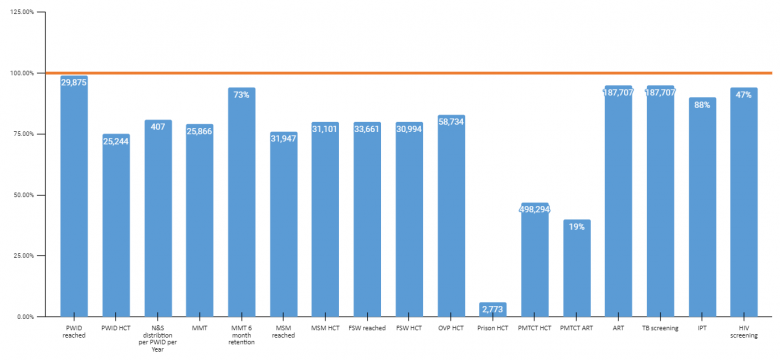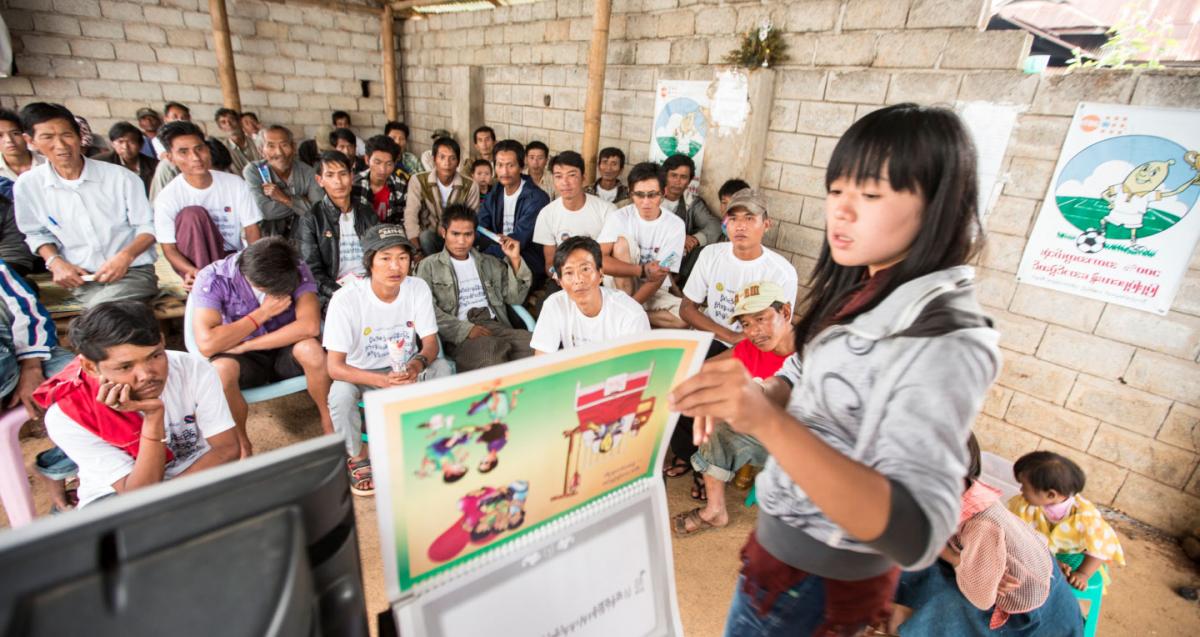
In 2022, the COVID-19 pandemic continued to impact healthcare services, including for people living with and affected by HIV. Moreover, in Myanmar, the political situation continued to bring up many challenges in the way programmes are implemented in the country. In these times of crisis, PR-UNOPS and its implementing partners worked hard to preserve the continuation of essential health services while undertaking COVID-19 infection control measures so that the interventions were not interrupted.
By the end of 2022, 187,707 people living with HIV received antiretroviral therapy (ART) (95% of the planned target for the year). To ensure the People Living with HIV (PLHIV) access to ART, implementation approaches were adopted in line with the needs at the ground level and could continue to provide Antiretroviral Therapy to PLHIVs.
About 498,294 (47% of target) pregnant women received HIV counseling and testing and knew their test results, and 19% of HIV-positive pregnant women received antiretroviral drugs to prevent mother-to-child transmission of HIV (PMTCT) provided as part of a package of antenatal care services offered to all pregnant women at public health facilities in Myanmar.
In 2022, in addition to ordinary outreach and Drop-in Center approaches, new innovative approaches such as online prevention consultation and community-based testing (CBS) approaches were implemented. About 31,947 (76% of target) men who have sex with men (MSM), 33,661 (80%) female sex workers (FSW) and 29,875 (99%) people who inject drugs (PWID) were reached with HIV prevention services. In total, 30,994 (80%) FSW and 31,101 (80%) MSM underwent voluntary HIV testing and received their test results and post-test counseling. About 25,244 (75%) PWID consented to HIV testing and received their test results.
At the end of 2022, 25,866 (79%) PWID had been enrolled in methadone maintenance therapy (MMT) in 89 MMT sites across the nation, and 73% of persons who enrolled in MMT continued the treatment for at least six months. To ensure uninterrupted MMT, implementing partners practiced take-home methadone dosages to reduce the frequency of visits to the MMT Centers by the clients while practicing physical distancing among the clients and infection control measures.
Regarding needle and syringe distribution to PWID, the equivalent of 407 (81% of target) needles and syringes per person were distributed in 2022. This high achievement was due to innovative approaches such as secondary NSEP distribution points and community-based distribution approaches were developed and implemented as per the HIV contingency plan on Covid-19 guidance.
In 2022, 58,734 (83% of target) of other vulnerable populations (OVP) consented to HIV testing and received their test results and post-test counseling.
About 88 percent of new HIV-positive patients started isoniazid preventive therapy (IPT). Moreover, 95 percent of HIV patients were screened for TB during their last visit. About 47 percent of TB patients had their HIV status assessed and documented.


